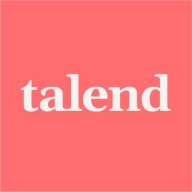

Talend Open Studio and Fivetran compete in the data integration category. Fivetran seems to have the upper hand due to its ease of use and integrated connectors.
Features: Talend Open Studio supports over 900 components for data sources, offering flexibility with its custom ETL job creation. It appeals to both technical and non-technical users. Fivetran is appreciated for its managed data pipelines and simplified data synchronization for business applications, facilitated by strong integrated connectors.
Room for Improvement: Talend Open Studio needs to enhance its enterprise feature alignment, installation configuration, and cloud transition. It faces challenges in scheduling, data profiling, and documentation. Fivetran could improve data pipeline observability, expand connective resources, and optimize its metadata API. The cost and real-time data capabilities also present improvement areas.
Ease of Deployment and Customer Service: Talend Open Studio is versatile, functioning well in on-premises and hybrid cloud environments, but relies on community forums for support. Its technical service is mixed. Fivetran favors public cloud deployment and excels in ease of setup, though its customer service is often seen as costly and limited.
Pricing and ROI: Talend Open Studio offers a free open-source version, making it cost-effective for small teams, with enterprise licensing options. Although valuable, its costs increase when scaled. Fivetran’s data-driven pricing model supports larger workflows, offering competitive returns, though initial costs can be high for smaller applications.
Fivetran provides time savings, cost reductions, and improvements in data quality.
It saves us the effort of having one to two data engineers managing the tasks that Fivetran handles.
If they could provide support more quickly, that would be great.
The technical support provided by Fivetran has generally been good, with a response time and competence that I would rate as good.
Customer support from Fivetran is quite good; it's really nice and responsive.
Fivetran's scalability has been tested effectively, and it has been working well for our organization's growing data needs.
They have 99.9% accuracy on the data load and they maintain transparency.
In my experience, Fivetran is stable with very few instances of downtime or reliability issues.
During the duration of the time that we used Fivetran, it was highly stable.
From a cost perspective, if the number of connectors is lesser, then Fivetran is not the most cost-efficient option.
When we tried to use a built-in Oracle connector, it didn't allow for the tweaks we needed, which led us to the SDK connector route and caused delays in development.
Fivetran could improve by adapting more for technical users and by providing more options for such users.
If we could have round-the-clock support, we would be able to resolve many issues which we encounter during the development part.
Our current yearly contract for Fivetran is approximately $70,000.
The most valuable feature of Fivetran is its built-in connectors for a wide range of data sources.
The real-time data replication is what I see best in the market where it reduces the overhead of customers needing to maintain the pipeline.
Fivetran not only has built-in connectors but also provides SDK connectors, allowing us to develop our own connectors in an easy manner.
It also comes with a console which helps us to monitor the jobs we have built in, making that monitoring part easy.
| Product | Market Share (%) |
|---|---|
| Talend Open Studio | 2.8% |
| Fivetran | 1.9% |
| Other | 95.3% |


| Company Size | Count |
|---|---|
| Small Business | 10 |
| Midsize Enterprise | 7 |
| Large Enterprise | 16 |
| Company Size | Count |
|---|---|
| Small Business | 22 |
| Midsize Enterprise | 13 |
| Large Enterprise | 18 |
Fivetran, the global leader in data movement, is trusted by companies like OpenAI, LVMH, Pfizer, Verizon and Spotify to centralize data from SaaS applications, databases, files, and other sources into cloud destinations, including data lakes. With high-performance pipelines, seamless interoperability, and enterprise-grade security, Fivetran empowers organizations to modernize their data infrastructure, power analytics and AI, ensure compliance, and achieve transformative business outcomes. Learn more at Fivetran.com
Talend Open Studio is a free, open source ETL tool for data integration and Big Data. The solution enables you to extract diverse datasets and normalize and transform them into a consistent format which can be loaded into a number of third-party databases and applications.
Talend Open Studio Features
Talend Open Studio has many valuable key features. Some of the most useful ones include:
Talend Open Studio Benefits
There are several benefits to implementing Talend Open Studio. Some of the biggest advantages the solution offers include:
Reviews from Real Users
Below are some reviews and helpful feedback written by PeerSpot users currently using the Talend Open Studio solution.
Elio B., Data Integration Specialist/CTO at Asset messages, says, "The solution has a good balance between automated items and the ability for a developer to integrate and extend what he needs. Other competing tools do not offer the same grade of flexibility when you need to go beyond what is provided by the tool. Talend, on the other hand, allows you to expand very easily."
A Practice Head, Analytics at a tech services company mentions, “The data integration aspect of the solution is excellent. The product's data preparation features are very good. There's very useful data stewardship within the product. From a technical standpoint, the solution itself is pretty good. There are very good pre-built connectors in Talend, which is good for many clients or businesses, as, in most cases, companies are dealing with multiple data sources from multiple technologies. That is where a tool like Talend is extremely helpful.”
Prerna T., Senior System Executive at a tech services company, comments, “The best thing I have found with Talend Open Studio is their major support for the lookups. With Salesforce, when we want to relate our child objects to their parent object, we need to create them via IDs. Then the upsert operation, which will allow you to relate a child object to the event, will have an external ID. That is the best thing which keeps it very sorted. I like that.”
An Implementation Specialist, Individual Contributor at a computer software company, states, “I can connect with different databases such as Oracle Database or SQL Server. It allows you to extract the data from one database to another. I can structure the data by filtering and mapping the fields.” He also adds, “It is very user-friendly. You need to know the basics of SQL development or SQL queries, and you can use this tool.”
PeerSpot user Badrakh V., Information System Architect at Astvision, explains, "The most valuable features are the ETL tools."
We monitor all Data Integration reviews to prevent fraudulent reviews and keep review quality high. We do not post reviews by company employees or direct competitors. We validate each review for authenticity via cross-reference with LinkedIn, and personal follow-up with the reviewer when necessary.